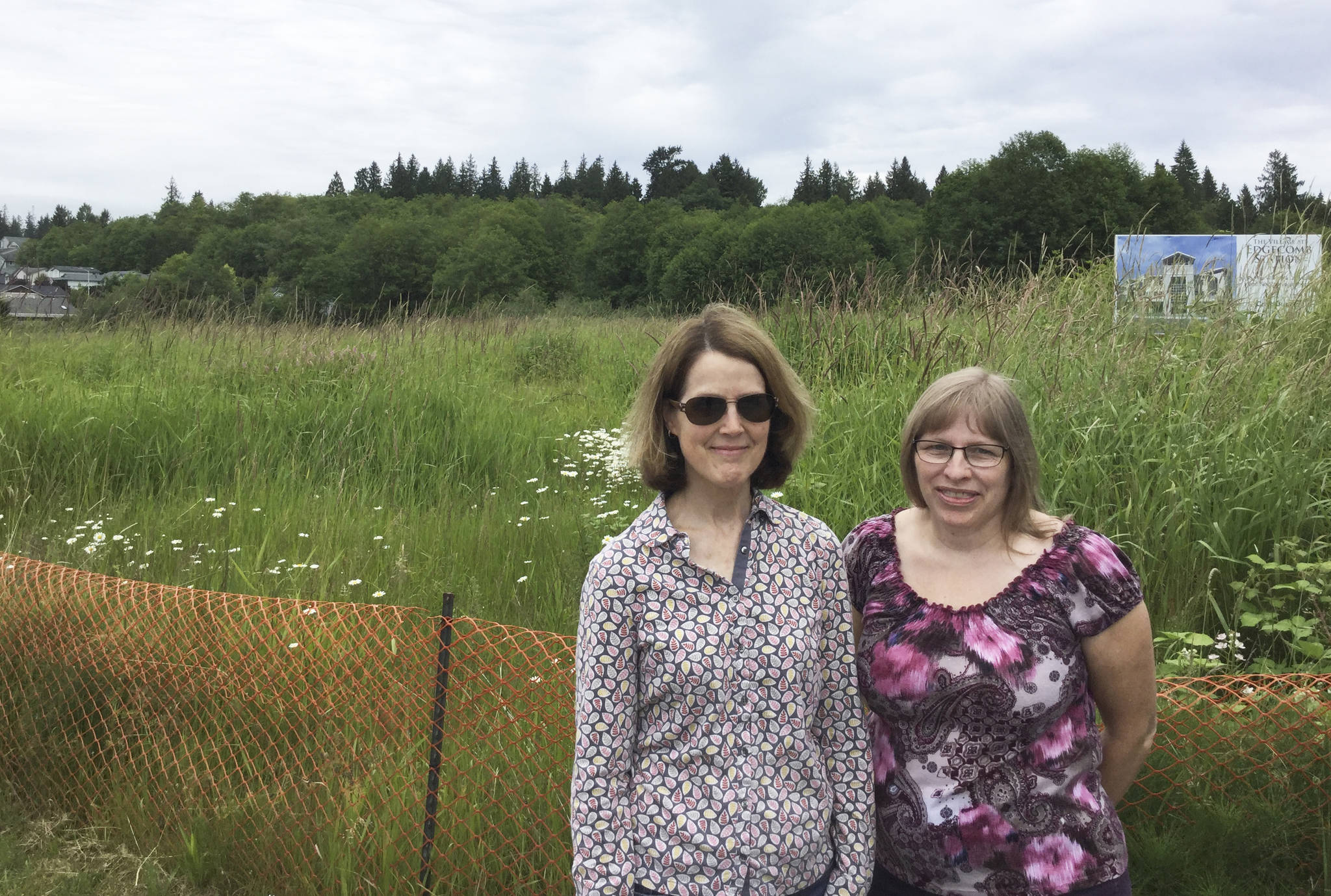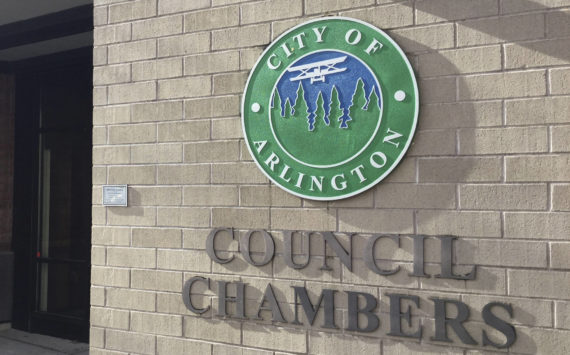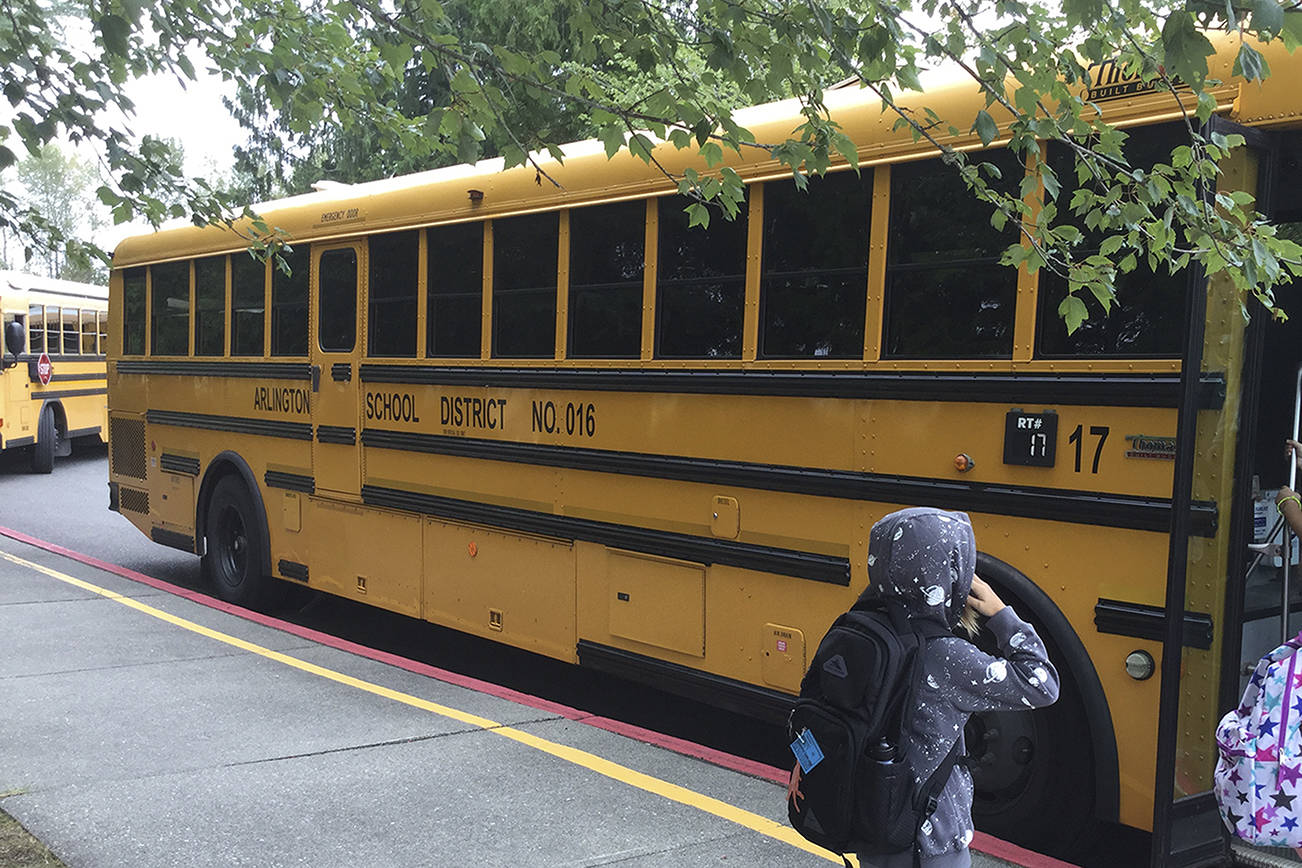ARLINGTON – A rezone that would clear the way potentially for 90 townhouses near 172nd Street and 67th Avenue NE will go the city council without a recommendation from the planning commission.
At a packed hearing Tuesday for the Riar Family rezone, the three planning commissioners present could not reach a decision.
Commissioner Vernon Beach was absent, while commissioner Aaron MacDonald recused himself because he served as project architect for the rezone with Stanwood-based Pelletier and Schaar. He submitted the original application to the city last November. He no longer works for the firm.
The 7.23-acre rezone of mostly wooded hillside property has drawn the ire of nearby residents in two single-family neighborhoods. The rezone by Gill Supinder would reclassify the parcels from low- to moderate-density to high-density residential, clearing the way for three-story condominiums.
Weighing nearby residents’ concerns in recent months, planning officials worked with the applicant to modify the project, reducing the number of townhouses from 120 to 90, realigning a roadway that would access 172nd to better distribute neighborhood traffic, and adding vegetative buffers.
Over the next 20 years, the city will need to absorb at a minimum 7,000 additional residents within the city, said Marc Hayes, Community and Economic Development director.
“There is not enough buildable land to be able to do that with only single-family housing development,” Hayes said.
The commissioners and city officials have to look at planning for growth “from a holistic view, not a site-specific view.”
More than 40 people attended the hearing, which had been postponed in April due to a likely “significant difference of opinion on the rezone,” planning commission chairman Bruce Angell.
Sixteen people spoke against the rezone on a variety of grounds, citing increased traffic and local roadways ill-equipped to handle more volume, drainage and environmental issues, impacts on school populations, and under-staffed police and fire services already strained from growth.
Dwan Kinney, whose property was added to the rezone along with adjacent properties, said she and her husband, Bruce, moved there 20 years ago for the natural surroundings, old-growth forest, private well, wetland features and quality of life.
She said the townhouse project would add more traffic to 172nd that already sees frequent backups, with no widening plans in the future. She added that additional housing will compound already existing wetland and drainage issues on her property, rendering more of it unusable.
“This rezone is almost one step away from eminent domain,” Kinney said. “Where’s the urgency?”
Eyleen McCluskey, a Gleneagle resident, said she understands Arlington’s need to grow.
“But I support managed, reasonable growth,” she said. “I don’t think that’s what this is. This rezone is an example of haphazard growth.”
Robert Cameron, president of the neighboring Crossing at Edgecomb homeowners association, said a proposed connecting road into their neighborhood is an absurd idea. Drivers already do not obey speed limits along narrow roadways with on-street vehicle parking and children at play. That’s only one of a host of problems he sees.
“The applicant living in Canada won’t absorb the problem; he’ll absorb the profits,” Cameron said.
Homeowner Otis Scully, who lives west of the proposal, wondered what will happen to the coyotes, blue heron and other wildlife that call the area home.
He also mentioned that when the Atonement Free Lutheran Church in the rezone area wanted to build on property north of the church several years ago, the city told them they couldn’t because of the wetlands.
The Crossing at Edgecomb resident Judy Castanares provided a visual of the level of opposition: two letters from a lawyer and a real estate broker favoring the rezone, and holding up a three quarter-inch stack of letters and emails opposing it – some of them representing entire HOAs.
Her home lies just east of the condominium proposal. She said that the developers are trying to shove too many people into too small an area, she’s worried about public safety, and traffic collisions have increased significantly in the 172nd corridor. If the townhouses get built, she and her husband will move.
Gleneagle resident George Brain said, “What you’re proposing is out of tune with the community. As a real estate agent, I want growth. I’m all about growth, but this proposal is wrong.”
He said lack of access to neighborhood convenience stores and services, and a road system with already frequent backups, car and pedestrian accidents and no sidewalk infrastructure add no value for existing homeowners.
Property at the corner of 172nd and 67th and west of the Riar property is zoned Neighborhood Commercial, with hopes to build The Village at Edgecomb Station, if an investor materializes.
The mixed-use project, first of its kind in Arlington, would include three commercial lots fronting the Centennial Trail and 67th, and a potential 160 condominiums behind.
Kinney said that environmental impacts and critical areas need further review. She said a critical areas study done 10 years ago for a proposed project to build 24 homes does not adequately address issues related to a multi-family housing project today.
Jean Randall, who lives south of 172nd and 67th, said city leaders should also consider what will happen when the proposed Manufacturing Industrial Center sought by the cities of Arlington and Marysville brings its own built-in traffic to major roads, including 172nd.
“We need to grow sensibly to main the character of Arlington,” she said. “There is so much that is going to happen to this town.”
Commission Ken Levesque asked Hayes about the consequences if the city does not meet housing targets projected in the 20-year window.
Hayes said noncompliance with the Growth Management Act lead to sanctions such as cutting off state funding sources for infrastructure, such as roads.
The rezone is scheduled for the June 26 city council workshop, with final action at the July 3 meeting.
The proposal also requires a city comprehensive plan amendment and change in the Future Land Use Map.







